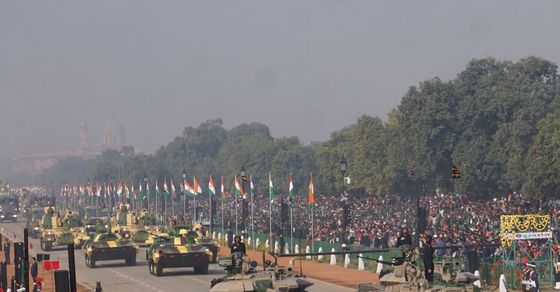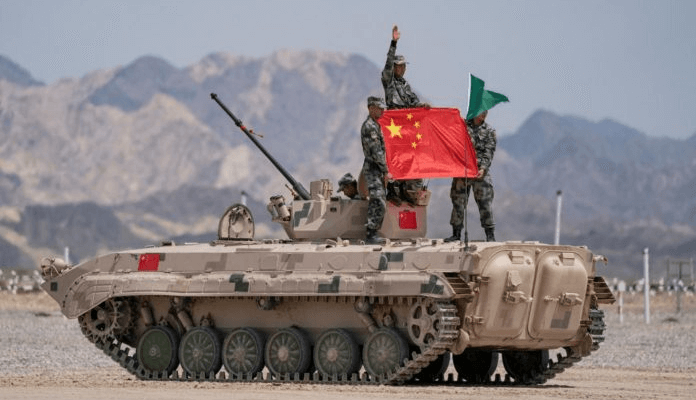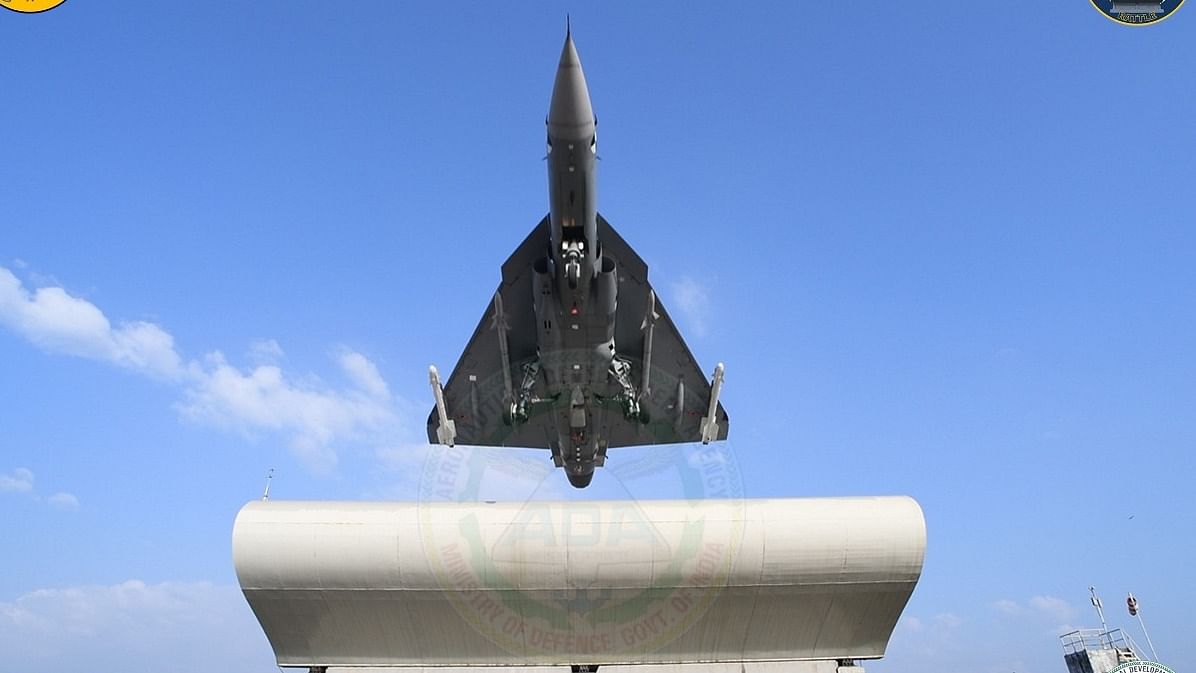Aatmanirbhar in defence can’t be a mere slogan. Modi govt must handhold private players
Three recent developments involving the military, DRDO and private sector have exposed the dichotomy in the Narendra Modi government’s quest for self-reliant India or Aatmanirbhar Bharat, the Prime Minister’s refurbished version of Make in India.
The Defence Research Development Organisation (DRDO), Ordnance Factory Board (OFB) and Hindustan Aeronautics Limited (HAL), along with other state-run defence enterprises must unload their bureaucratic burden, cut the red tape and take a leap towards becoming result-oriented, professional organisations. They should also end the turf war that they indulge in against the private sector. It is time for them to stop living in silos.
Make in India or ‘
aatmanirbarta‘ cannot merely be a lip service. The government, along with the armed forces and the private industry, besides the state-run manufacturers and the DRDO, will have to walk the talk.
The hollowness of indigenous defence manufacturing can be gauged from the fact that when tensions have risen with China at the Line of Actual Control (LAC), the forces have to depend on foreign suppliers in the US, Russia, France, Israel, among other countries, to shore up their fire power and operational capability.
The adversary – China – has gone from being a major defence importer to becoming a military manufacturing hub. Such has been the pace of the Chinese ‘
aatmanirbarta‘ that it has armed itself with indigenous cutting-edge systems and technologies, and is now arming other countries, including India’s perennial headache – Pakistan.
Need a dedicated effort
India needs to make a dedicated effort to ramp up defence manufacturing. It is a shame that the country has to depend on foreign players even for the supply of most basic weapons such as a rifle.
Any private player you talk to will tell you a number of stories detailing how tough and frustrating it is to work with the DRDO and the Services. However, this doesn’t mean private players have a clean slate.
The private companies will have to acknowledge that they cannot get everything on a platter. They should not limit Make in India to just assembling or manufacturing through tie ups with foreign players.
The private sector will have to invest money in research and stay put for long haul. As for the government, it must handhold these companies and give them the required support.
There is also a thinking within the establishment that Make in India means every system is completely built in India. And hence a lot of projects take too long because the focus is to build something which India has no experience with. It is foolish to assume that Make in India means that everything would be made in India. Even a fighter plane like Rafale or Gripen have equipment and systems, which are made outside the country of its origin
. I am not saying India should not attempt to make them, but that effort should be separated from the main policy which should be looked at from a practical point of view. As and when things materialise, the indigenous sub-system should be added.
Private sector needs space
Three recent developments, however, expose the grim reality of India’s defence manufacturing industry.
First, the emerging contention over
Navy’s $3 billion contract for purchase of Naval Utility Helicopter (NUH). The initiative is being pursued under a strategic partnership model focused on the Indian private industry meeting manufacturing needs through tie-ups with foreign vendors. However, state-owned HAL has also shown interest in the supply of these choppers, which has made the Navy and the private sector in particular see red.
Such was the bitter fight that the HAL chairman R. Madhavan in an interview alleged that the Navy was eyeing one particular foreign chopper: “The Indian Navy is looking to acquire its NUH through the Strategic Partnership route targeting foreign aircraft, particularly one aircraft”.
The private players have also
written to the Defence Ministry against the HAL inclusion. This is not the first time they have
objected to HAL’s inclusion.
There really is no problem with HAL being part of the race along with other foreign players like the Airbus, which is said to be the front-runner to bag the deal. The fact is that HAL will have to compete with others and meet the Navy’s key requirements. And if it meets them, India will have to select HAL and ask it to enter into a strategic partnership with a private defence player to manufacture the aircraft jointly, which will also help churn out larger numbers and faster delivery. This tie up with HAL and a private player, which should entail 100 per cent transfer of technology, will be helpful to kickstart the helicopter hub in India.
The delays
The second such instance is the development of a system by the DRDO. According to an ANI report, the DRDO has developed the P7 Heavy Drop System, which is capable of para dropping military stores up to 7-tonne weight class from IL 76 aircraft.
Reacting to this news, former Director General of Military Operations, Lt Gen Vinod Bhatia (Retd), tweeted: “The GSQR was prepared by me as Director Para & SF in 1998/99. Heavy drop platform developed now after 22 years, when IL 76 are in the last leg, we have C130J Hercules and C5 aircraft with heavy drop equipment. What a waste of time, talent and money. Happy Landings paratroopers”.
Green shoots visible in private sector
The third instance again shows why Make in India in defence is still a long shot when it comes to bulk manufacturing. In its quest to arm the infantry with a basic rifle, the Army is now going for a
repeat order of 72,000 SiG 716 G2s. This means that over 1.4 lakh weapons are being bought off the shelf from the US. Where is Make in India?
The Army is also likely to go for the purchase of the UAE carbines assault rifles. This comes even though India already has in place a joint venture with Russia for production of AK 203 that is yet to take off.
While India’s eyes are still set on foreign shops, the domestic private small arms industry has come out with a range of weapons. Some firms have also started manufacturing foreign weapons with the help of transfer of technology and are keeping the indigenous content high.
One of the early companies to set up an arms manufacturing plant in India was PLR Systems that has a tie-up with Israeli Weapons System (IWI). Under the deal, the companies began producing Tavor series rifles, the mainstay of India’s Special Forces, along with others like the Galil sniper rifles, and Uzi Pro submachine gun with indigenous content ranging from 40-60 per cent.
In case of a repeat order, though, it is sent to IWI directly instead of the local manufacturing unit. This is done because an order to the local manufacturing unit would mean a change in the name of the contracting firm since there will be a change in the name of the firm.
This would be taken as a new company which means that fresh trials will have to be held even when it is the same rifle manufactured in India with a large indigenous component.
Bengaluru-based SSS Defence is another company in the domestic market. The firm manufactures snipers, assault rifles and light machine guns. The rifles are 100 per cent indigenously designed and SSS Defence holds the Intellectual Property Rights. It is remarkable that in a country like India, a company has come out with a small arms range on its own.
What these private players need is handholding and a chance to deliver. The armed forces should stop focusing on foreign tags and give Indians companies an opportunity, if Modi’s idea of ‘
aatmanirbharta’ is to be lived up to.
For making India aatmanirbhar in defence production, the Modi government, along with the armed forces, private industry and the DRDO, will have to walk the talk.

theprint.in







